Top 30 Must Know Generative AI Stats in 2024
Enterprises increasingly adopt generative AI, natural language processing (NLP) and neural networks to expand capabilities and enhance user experiences. This surge, however, poses an intricate challenge: understanding and applying generative AI statistics to optimize outputs while trying to maintain AI spending.
In this article, we gathered the top 30 generative AI stats that can be useful for businesses.
Generative AI stats showing the state of the market
1- According to Acumen, the global generative AI market will reach ~ $111 billion by 2030. (Acumen)
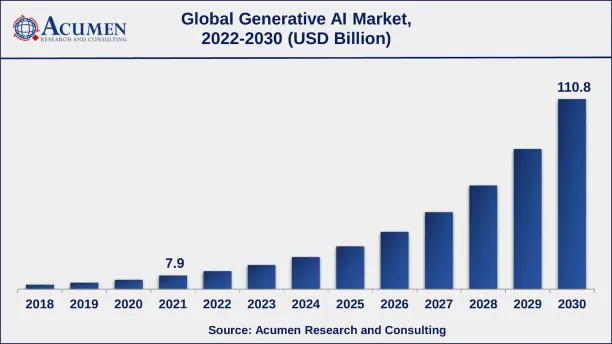
Figure 1. The generative AI industry across years
2- The potential addition of generative AI to the global economy could range from $2.6 trillion to $4.4 trillion annually, based on the 63 use cases examined by Mckinsey. To put this in perspective, the total GDP of the United Kingdom in 2021 was $3.1 trillion. (McKinsey)
3- The impact of generative AI will increase the total impact of artificial intelligence by 15 to 40 percent. (McKinsey)
4- Roughly 75 percent of the potential value delivered by generative AI is concentrated in four primary sectors: customer operations, marketing and sales, software development, and research & development. (McKinsey)
5- Over the previous three years, venture capital firms have poured more than $1.7 billion into generative AI technologies. The sectors of AI-enabled drug discovery and AI software coding have been the major recipients of this funding. (Gartner)
6- By 2025, it’s anticipated that generative AI techniques will be used to systematically discover over 30% of new drugs and materials, a significant increase from zero today. (Gartner)
Generative AI impact across industries
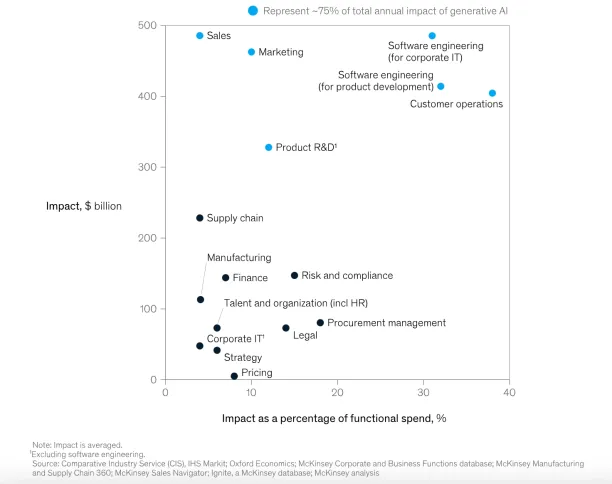
Figure 2. The adoption and impact of generative AI across different industries
7- A recent survey involving over 500 top-tier IT leaders has shown that ~ 70% plan to make generative AI a priority for their businesses in the upcoming 18 months. Additionally, one-third (33%) identified it as a chief concern. (Salesforce)
8- A third of the IT respondents in the survey believe that generative AI is being ‘over-exaggerated’ or ‘over-hyped’. (Salesforce)
9- 71% of the IT leaders surveyed believe that the implementation of generative AI could potentially introduce new security vulnerabilities to their data. (Salesforce)
10- If fully executed, the implementation of the technology across the banking industry could contribute an added value between $200 billion to $340 billion annually. (McKinsey)
11- Generative AI holds substantial potential for the banking sector. It could boost productivity by 2.8% to 4.7% of the industry’s annual income. (McKinsey)
12- The retail and consumer packaged goods sectors also stand to gain substantially from generative AI technology, with potential yearly benefits ranging from $400 billion to $660 billion. (McKinsey)
13- Generative AI has the potential to boost marketing productivity, with a value equivalent to 5% to 15% of the entire marketing spending. (McKinsey)
14- The direct influence of generative AI on software engineering productivity could equate to an increase of 20% to 45% of the existing annual expenditure on this function. (McKinsey)
15- A study discovered that software developers leveraging Microsoft’s GitHub Copilot were able to finish tasks 56% quicker compared to those who did not use the tool.1
16- Research indicates that generative AI technology could deliver productivity with a value ranging from 10 to 15 percent of overall R&D costs. (McKinsey)
Explore all generative AI industrial use cases from our comprehensive article.
The impact of generative AI on human labor
17- Present generative AI tools and associated technologies possess the potential to automate work tasks that currently consume 60% to 70% of employees’ time. (McKinsey)
18- In the United States, the technology could potentially replace 7% of jobs, while it’s expected to improve 63% of jobs. Meanwhile, 30% of jobs are projected to remain untouched by AI. (Goldman Sachs)
19- Depending on the pace of technology adoption and the reallocation of worker time into other tasks, generative AI could potentially foster an annual labor productivity growth of 0.1% to 0.6% through 2040. (McKinsey)
20- A study discovered that in a company employing 5,000 customer service representatives, the implementation of generative AI resulted in a ~15% hourly increase in issue resolution, and it also decreased the time spent managing an issue by ~10%. (NBER)
21- In education, generative AI automation will mostly impact graduate and undergraduate students. (McKinsey)
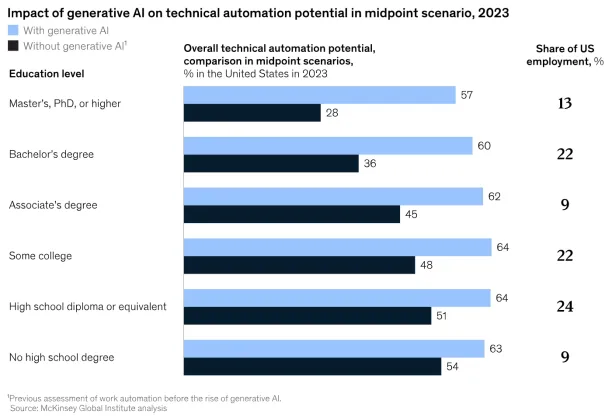
Figure 3. The impact of generative AI automation on educational positions
For more, check out our article on the ethical problems of generative AI.
AI generated content
22- By 2025, around 30% of outbound marketing messages from major organizations will be synthetically generated, representing a substantial increase from the less than 2% observed in 2022. (Gartner)
23- It is anticipated that by 2030, a significant blockbuster film will be released where approximately 90% of the film’s content, spanning from text to video, will be generated by AI. (Gartner)
24- By 2025, it is estimated that generative AI will account for approximately 10% of the total global data produced. (Gartner II)
25- According to a survey, almost half of respondents expressed their lack of trust in AI-generated written content, stating that they believe human-written text is superior. (Insider)
26- 56% of the survey participants believe that AI-generated content is biased or inaccurate. (Insider)
ChatGPT stats
27- As of February 2023, companies initiating ChatGPT mostly saved more than 50,000 dollars. (Statista)
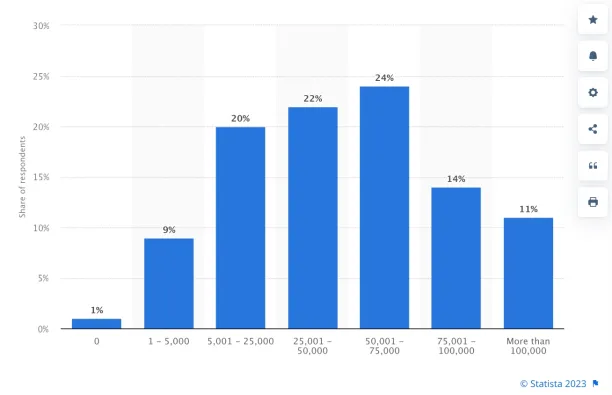
Figure 4. Money saved by the US companies due to generative AI adoption
28- In a survey, 33% of business leaders in the United States stated that they firmly believed the usage of ChatGPT would lead to an increase in layoffs by the end of 2023. Another 26% responded that it would likely be the case. Furthermore, 32% of the respondents estimated that the utilization of ChatGPT would certainly result in more layoffs within the next five years. (Statista)
29- Nearly 63% of individuals believe that ChatGPT will eventually render Google obsolete. (Tidio)
30- The tasks that people most frequently delegate to ChatGPT are writing code (27%), preparing for job interviews (24%), and explaining complex concepts in simple terms (25%). (Tidio)
Explore the various business use cases of ChatGPT from our article.
If you have questions or need help in finding vendors, reach out:
Resources: Acumen Research and Consulting, McKinsey & Company, Gartner, Salesforce, Goldman Sachs, NBER, Gartner II, Insider Intelligence, Statista, Tidio
External Links
- 1. “The Impact of AI on Developer Productivity: Evidence from GitHub Copilot.” arXiv, 13 February 2023. Accessed 17 July 2023.

Cem is the principal analyst at AIMultiple since 2017. AIMultiple informs hundreds of thousands of businesses (as per Similarweb) including 60% of Fortune 500 every month.
Cem's work has been cited by leading global publications including Business Insider, Forbes, Washington Post, global firms like Deloitte, HPE, NGOs like World Economic Forum and supranational organizations like European Commission. You can see more reputable companies and media that referenced AIMultiple.
Throughout his career, Cem served as a tech consultant, tech buyer and tech entrepreneur. He advised enterprises on their technology decisions at McKinsey & Company and Altman Solon for more than a decade. He also published a McKinsey report on digitalization.
He led technology strategy and procurement of a telco while reporting to the CEO. He has also led commercial growth of deep tech company Hypatos that reached a 7 digit annual recurring revenue and a 9 digit valuation from 0 within 2 years. Cem's work in Hypatos was covered by leading technology publications like TechCrunch and Business Insider.
Cem regularly speaks at international technology conferences. He graduated from Bogazici University as a computer engineer and holds an MBA from Columbia Business School.
Sources:
AIMultiple.com Traffic Analytics, Ranking & Audience, Similarweb.
Why Microsoft, IBM, and Google Are Ramping up Efforts on AI Ethics, Business Insider.
Microsoft invests $1 billion in OpenAI to pursue artificial intelligence that’s smarter than we are, Washington Post.
Data management barriers to AI success, Deloitte.
Empowering AI Leadership: AI C-Suite Toolkit, World Economic Forum.
Science, Research and Innovation Performance of the EU, European Commission.
Public-sector digitization: The trillion-dollar challenge, McKinsey & Company.
Hypatos gets $11.8M for a deep learning approach to document processing, TechCrunch.
We got an exclusive look at the pitch deck AI startup Hypatos used to raise $11 million, Business Insider.
To stay up-to-date on B2B tech & accelerate your enterprise:
Follow on
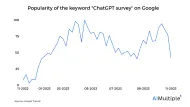
Comments
Your email address will not be published. All fields are required.